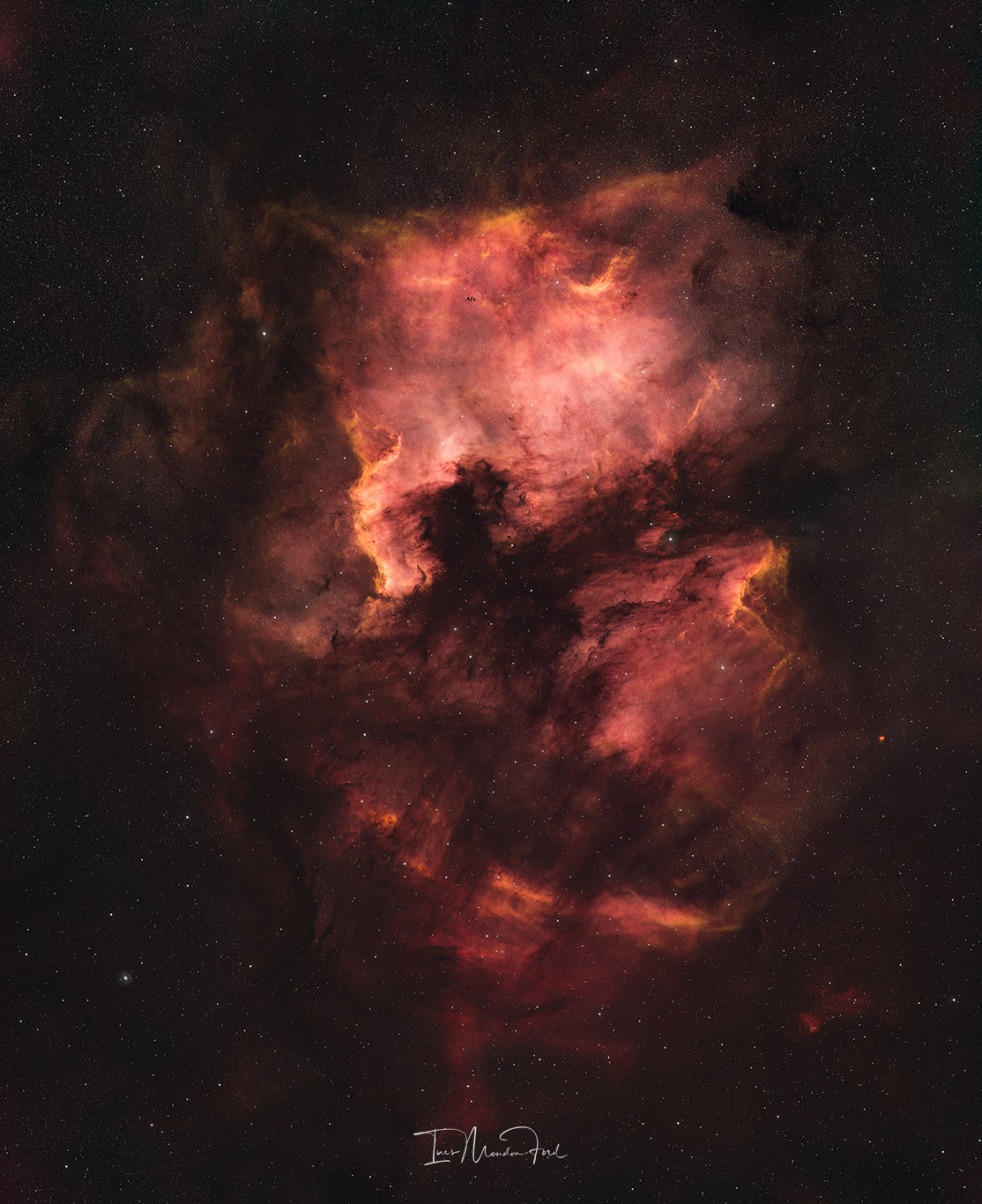The North America Nebula, NGC 7000, is characterized by its prominent “Gulf of Mexico” region, a dark lane of obscuring dust that separates the nebula from the adjoining Pelican Nebula, IC 5070. This dark dust is not merely an aesthetic feature but plays a crucial role in the region’s star formation processes. It absorbs and scatters the light from young stars hidden within, making the study of this region particularly intriguing in infrared wavelengths, where the dust becomes more transparent.
The nebula complex is illuminated by the ultraviolet radiation of young, massive stars, particularly those belonging to the Cygnus OB2 association, though the precise star responsible for ionizing the surrounding gas is hidden by intervening dust. This ionization causes the hydrogen gas in the nebula to glow in a characteristic red, known as H-alpha emission, which dominates the visual appearance of the region. The intense radiation from these stars creates a series of ionization fronts, where the radiation pressure pushes against the surrounding gas, compressing it and triggering new waves of star formation.
Within the North America and Pelican Nebula complex, ongoing star formation is evidenced by the presence of numerous young stellar objects, including protostars and Herbig-Haro objects. These newborn stars are often still embedded in their natal clouds, where their energetic outflows interact with the surrounding material, creating bright, compact emission regions. The intricate structures within the nebula, including towering pillars of gas and filaments of dust, are shaped by the stellar winds and radiation from these young stars, highlighting the dynamic nature of this stellar nursery. The full colour data from the TS94EDPH has been augmented by SII data from the RASA.
TS94EDPH (with Reducer)
10Micron GM1000 HPS
SIGMA fp L (colour)
ca. 8 hrs, ISO 400, F4.4, 414mm
Celestron RASA 11
10Micron GM1000 HPS
SIGMA fp L (monochrome)
ca 4 hrs, ISO 400, F2.2, 620mm
